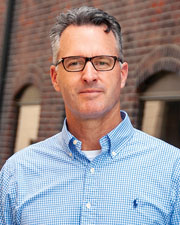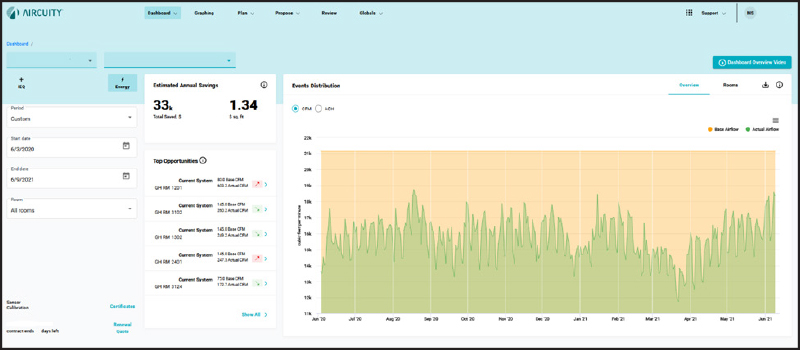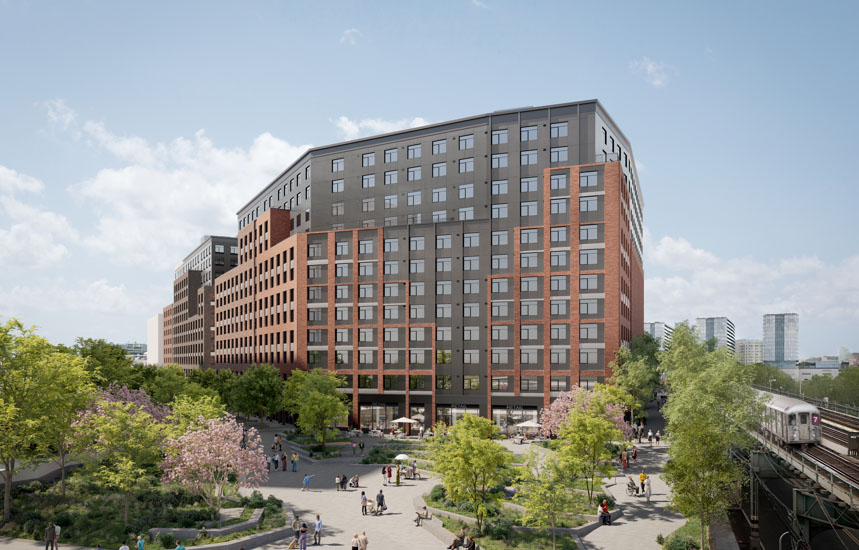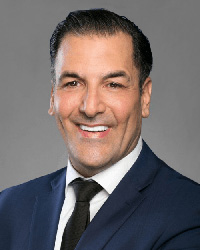NYC: Creating a healthy building while meeting the mayor’s carbon neutrality goal is possible - by Dan Diehl

Across the city employers have begun or are planning the process of re-occupying their buildings. Workers expect a healthy environment which heavily relies on fresh air. Yet the increase in ventilation rates also drives up energy use and carbon emissions, making it harder for buildings to meet the mayor’s carbon challenge which sets the goal of carbon neutrality by 2050.
These two imperatives of increasing health and sustainability are seen by many as conflicting: goals that must be traded off against one another in a zero-sum game. Under the old design criteria of fixed ventilation rates, they ARE in conflict. That conflict leads to the “healthy vs. sustainable trap” – a sub-optimal cycle in which building owners periodically over-ventilate when health is the most urgent concern and under-ventilate when sustainability becomes the more top of mind issue. However, it does not have to be this way.
 Sustainability
Sustainability
Recent U.N. data1 shows 28% of total global carbon emission is the result of operational emissions (meaning operating buildings), which is why it is important for building owners and operators to commit to reducing their carbon.
Today it is understood that setting a fixed ventilation rate exaggerates this conflict, and that the way out of the Healthy vs. Sustainable Trap is demand control ventilation (DCV) with accurate sensing and control of science-based healthy air parameters. Examples from critical environments confirm this optimal solution. To cite one of many examples, a well-known University of California System school focused on ventilation management in 17 buildings. The result: 61% efficiency gains while achieving the best safety record compared to all other peer institutions. This can be easily replicated at universities in NYC.
On the commercial office side, we know that historically, non-lab facilities will not produce that same amount of efficiency gains, due to their use of return air systems (versus 100% outside air) and lower initial fixed ventilation rates. However, occupancy rates will not return to previous levels for many facilities, and/or they will vary more dramatically going forward. In addition, the emerging consensus is to use higher fresh air rates in all buildings. This, for sure, means that if left unchanged or unmanaged, there is a huge potential to significantly over-ventilate, waste a lot of money and needlessly negatively impact sustainability goals
Healthy Buildings
Healthy Buildings are now a permanent driver of business and mission success, and COVID made us aware that all environments are critical. Despite this, many commercial real estate executives remain undecided on whether – and how – to proceed. Whether for COVID-related re-occupancy or longer-term IAQ goals, it can sometimes be hard to justify this investment.
COVID-19 isn’t the sole reason to provide healthy buildings. One of the longer-term effects of the pandemic is that building owners and operators will maintain and communicate healthy building parameters – perhaps even as a standard lease requirement. So building owners should implement holistic management solutions and know they’re delivering healthy air to all tenants. The key is measuring, controlling and communicating IAQ analytics based on multiple parameters and, in real time, directing more air when and where needed. When this approach using demand control ventilation is taken, ventilation rates can go above set rates when necessary, making the space healthier than a set ventilation rates. At the same time when spaces are not as densely occupied or empty, ventilation rates are reduced helping to reduce carbon emissions.
Optimizing these two seemingly conflicting requirements through ventilation performance can improve both simultaneously. Employees get better air quality for the spaces they occupy and building operators can reduce energy and carbon emissions. Meeting carbon neutrality goals and providing workers a healthy environment is possible.
1 https://www.unep.org/resources/publication/2019-global-status-report-buildings-and-construction-sector
Dan Diehl is the president and CEO at Aircuity, Newton, Mass.
Related Cos. and Sterling Equities open housing lottery for Willets Point Commons


Strategies for turning around COVID-distressed properties - by Carmelo Milio







.gif)

.gif)
.jpg)
.gif)